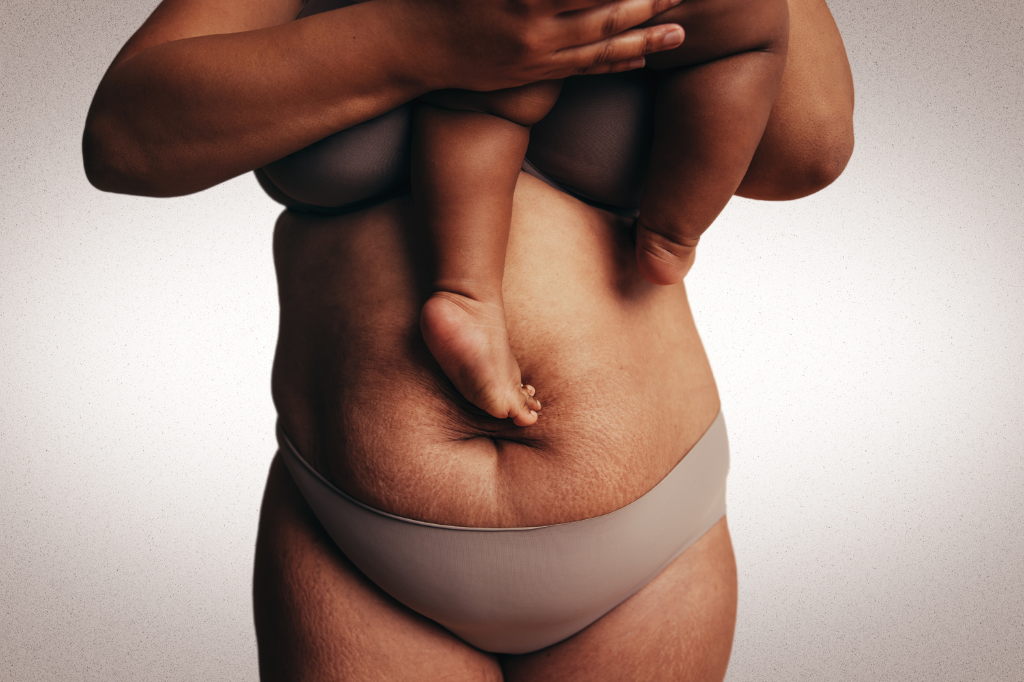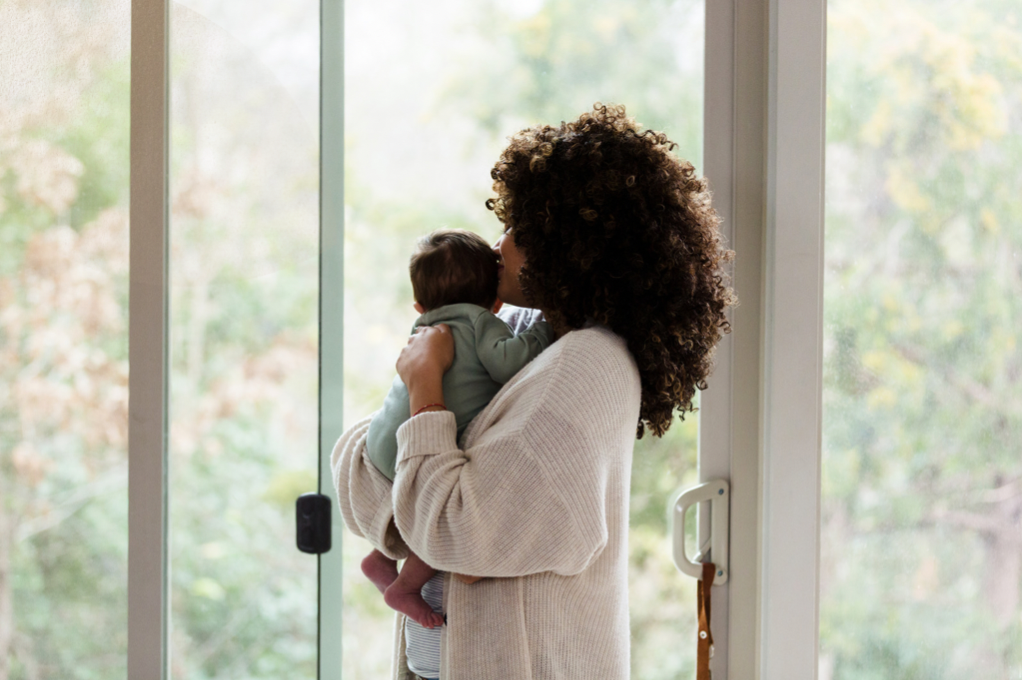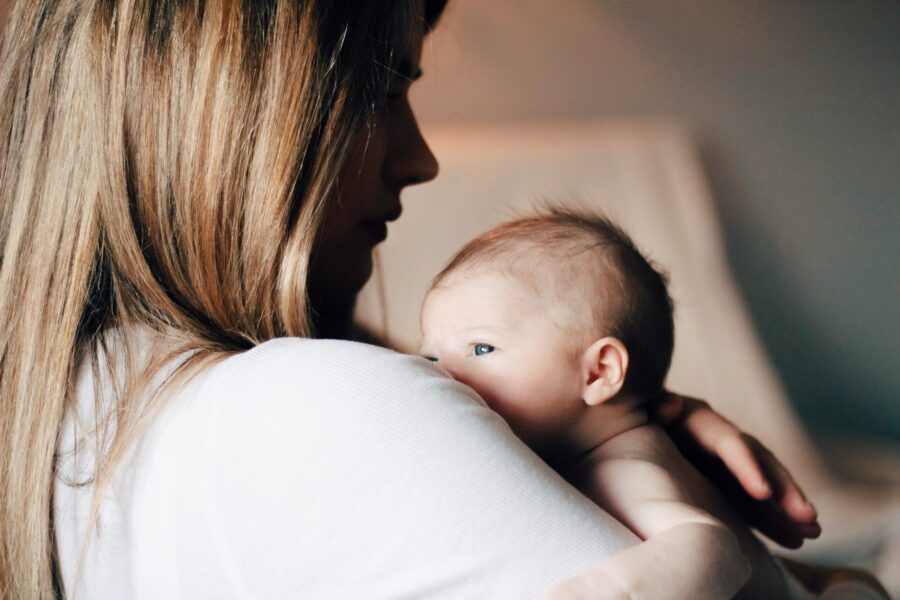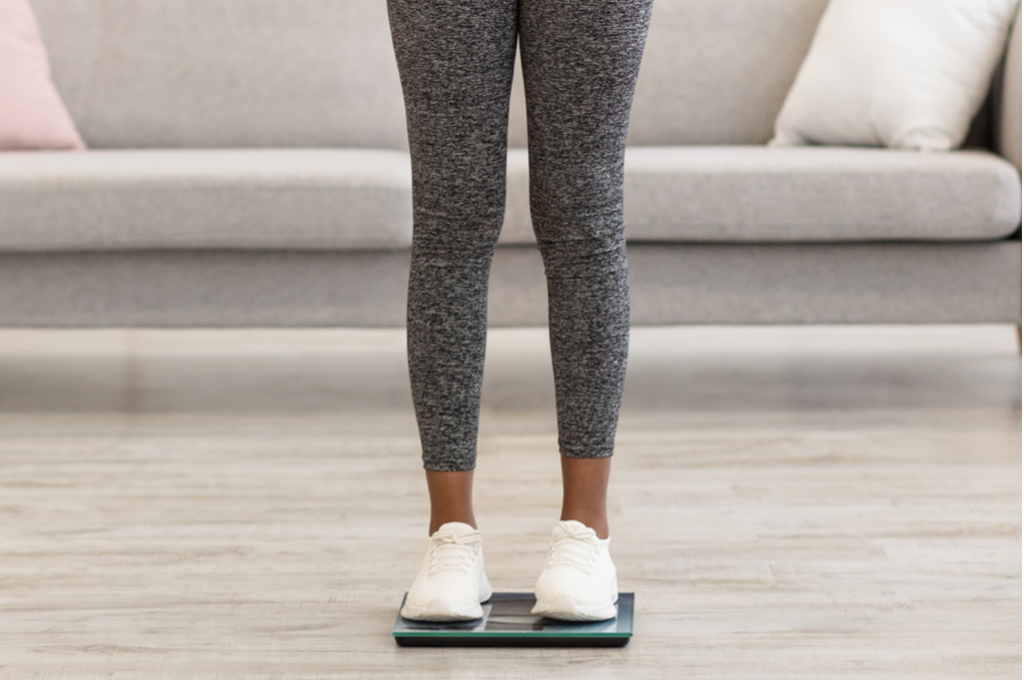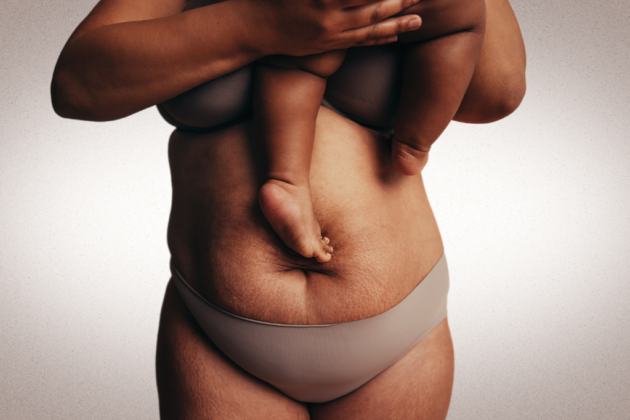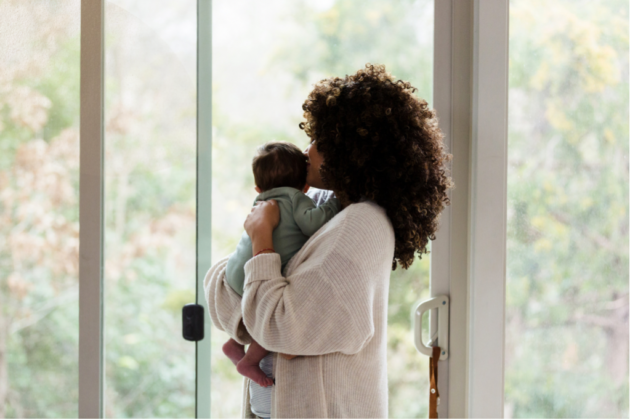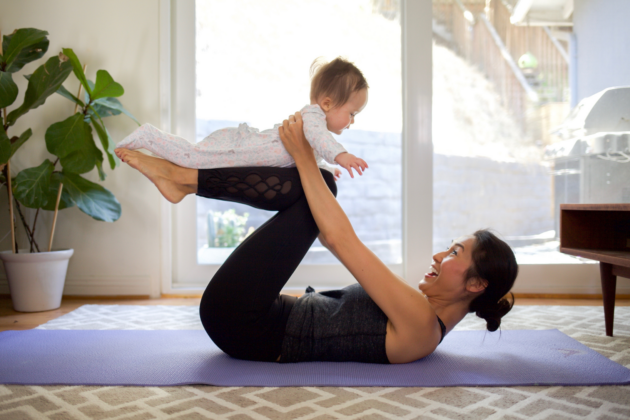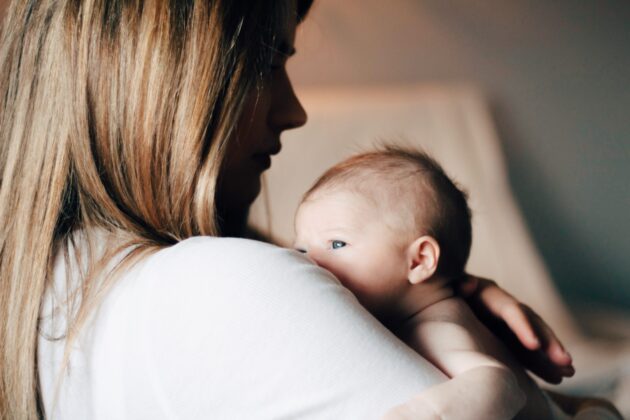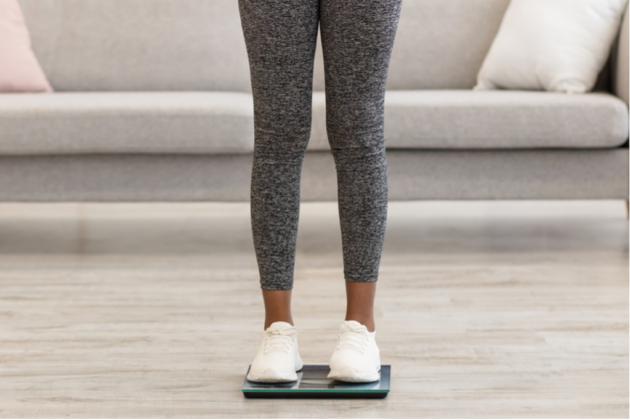Postpartum Hair Loss: Causes, Treatment Options, & More
Pregnancy is a time when numerous physiologic changes occur.
While pregnant, most women will report that their hair has never looked better. High levels of estrogen create locks of hair that are thick and lustrous.
Unfortunately, this beautiful thick hair does not last forever. During the postpartum period, almost half of all women find that their hair begins to thin and eventually fall out. This is called telogen effluvium.
Let’s quickly take a look at hair’s growth cycle. Hair grows in three distinct phases:
- Anagen phase
- Catagen phase
- Telogen phase
Anagen is the phase where your hair is growing. During pregnancy, your hair is active in this phase. Catagen is the resting phase when hair isn’t growing or falling out. And in the telogen phase, the hair separates from the follicle and falls out.
Due to changes in hormones, hair enters the telogen phase after giving birth.
Don’t worry, though, the telogen phase is not as scary as it seems.
Postpartum hair loss, or shedding, will not last forever. Though it seems as though your hair is coming out in chunks, the reality is that only about 100 to 300 strands of hair are lost daily. Hair shedding is most noticeable after showering or when brushing.
Fortunately, most women report that their hair returns to its normal thickness by one year after giving birth.
The rest of this guide goes over everything you need to know about postpartum hair loss, including what causes it, how to treat it, and when to consult a physician.
What causes postpartum hair loss?
Though postpartum hair loss can be distressing, it is completely normal. During pregnancy hormones keep your hair in the growth cycle, resulting in thick lustrous hair.
After birth, previously elevated estrogen levels start to drop. The declining estrogen causes your hair to switch from the growth phase to the shedding phase. In addition, lack of sleep, stress, and birth control can cause excess hair shedding.
If you are breastfeeding, you will notice even more hair loss. Breastfeeding is taxing on a woman’s body. Nutritional deficits from breastfeeding can increase postpartum hair loss. Working with a postpartum nutritionist is one way to help reduce dietary-related causes of postpartum hair loss.
When does postpartum hair loss start?
Postpartum hair loss does not start immediately after giving birth. Since it takes several months for estrogen levels to plummet, you may not notice an increase in hair shedding right away.
Most women notice hair loss two to four months after welcoming their new baby.
Breastfeeding further causes estrogen levels to decrease and exacerbate hair shedding.
Unfortunately, there is nothing that can be done to prevent postpartum hair loss. The good news is that by the time your hair starts to fall out, new hair is growing in.
How long does postpartum hair loss last?
As mentioned, hair loss in the postpartum period does not last forever. Postpartum hair loss is self-limited and usually stops 2 to 3 months after it starts.
According to the American Academy of Dermatology, by the time your baby has its first birthday, your hair should have returned to its normal state.
However, women who suffer from anemia, which is decreased iron levels from pregnancy, may notice that it takes longer for their hair shedding to resolve.
Can you prevent postpartum hair loss?
While you may not be able to prevent postpartum hair loss completely, there are some things you can do to help.
Here are some tips for reducing postpartum hair shedding:
- Avoid pulling your hair: Try not to pull your hair back in tight hairstyles, such as buns or ponytails. Use scrunchies and barrettes instead of rubber bands to pull hair back.
- Keep your hair short & trim split ends: Trim your remaining ends or even opt for a shorter style. Getting rid of split ends can make your hair appear thicker.
- Add color to your hair: Adding color can help improve hair’s texture and thickness. Color can give an illusion of thicker strands.
- Reduce heat: Avoid styling hair with heat. Limit the use of hair dryers, flat irons, and curling irons.
- Use volumizing shampoo & conditioner: Use shampoo and conditioner that add volume. Volumizing shampoos contain protein peptides that create the impression of thicker, fuller hair.
- Use conditioner for thin hair. A lightweight conditioner will not weigh down the remaining hair.
- Limit how often you wash your hair. Do not wash your hair every day. It is best to wash hair every 3 days.
Another recommendation from dermatologists is to eat a well-balanced diet after giving birth and continue to take your prenatal vitamins. Prenatal vitamins contain high levels of folate, B vitamins, and iron which are necessary for hair growth.
Do not take any herbal supplements or other vitamins before contacting your physician first.
When to talk to your doctor about postpartum hair loss
While postpartum hair loss is completely normal, it should resolve by the time your baby is around one year old. If you continue to experience excessive hair loss or hair thinning after the postpartum period has ended, it may be an indication of an underlying medical condition.
Iron deficiency (anemia), hypothyroidism, and Vitamin D deficiency can all contribute to hair loss. Vitamin deficiencies can be an easily treatable cause of hair loss in women.
If you are concerned that your hair loss is abnormal, consult a dermatologist who can evaluate and treat hair loss.
Pregnancy is a time when numerous physiologic changes occur.
While pregnant, most women will report that their hair has never looked better. High levels of estrogen create locks of hair that are thick and lustrous.
Unfortunately, this beautiful thick hair does not last forever. During the postpartum period, almost half of all women find that their hair begins to thin and eventually fall out. This is called telogen effluvium.
Let’s quickly take a look at hair’s growth cycle. Hair grows in three distinct phases:
- Anagen phase
- Catagen phase
- Telogen phase
Anagen is the phase where your hair is growing. During pregnancy, your hair is active in this phase. Catagen is the resting phase when hair isn’t growing or falling out. And in the telogen phase, the hair separates from the follicle and falls out.
Due to changes in hormones, hair enters the telogen phase after giving birth.
Don’t worry, though, the telogen phase is not as scary as it seems.
Postpartum hair loss, or shedding, will not last forever. Though it seems as though your hair is coming out in chunks, the reality is that only about 100 to 300 strands of hair are lost daily. Hair shedding is most noticeable after showering or when brushing.
Fortunately, most women report that their hair returns to its normal thickness by one year after giving birth.
The rest of this guide goes over everything you need to know about postpartum hair loss, including what causes it, how to treat it, and when to consult a physician.
What causes postpartum hair loss?
Though postpartum hair loss can be distressing, it is completely normal. During pregnancy hormones keep your hair in the growth cycle, resulting in thick lustrous hair.
After birth, previously elevated estrogen levels start to drop. The declining estrogen causes your hair to switch from the growth phase to the shedding phase. In addition, lack of sleep, stress, and birth control can cause excess hair shedding.
If you are breastfeeding, you will notice even more hair loss. Breastfeeding is taxing on a woman’s body. Nutritional deficits from breastfeeding can increase postpartum hair loss. Working with a postpartum nutritionist is one way to help reduce dietary-related causes of postpartum hair loss.
When does postpartum hair loss start?
Postpartum hair loss does not start immediately after giving birth. Since it takes several months for estrogen levels to plummet, you may not notice an increase in hair shedding right away.
Most women notice hair loss two to four months after welcoming their new baby.
Breastfeeding further causes estrogen levels to decrease and exacerbate hair shedding.
Unfortunately, there is nothing that can be done to prevent postpartum hair loss. The good news is that by the time your hair starts to fall out, new hair is growing in.
How long does postpartum hair loss last?
As mentioned, hair loss in the postpartum period does not last forever. Postpartum hair loss is self-limited and usually stops 2 to 3 months after it starts.
According to the American Academy of Dermatology, by the time your baby has its first birthday, your hair should have returned to its normal state.
However, women who suffer from anemia, which is decreased iron levels from pregnancy, may notice that it takes longer for their hair shedding to resolve.
Can you prevent postpartum hair loss?
While you may not be able to prevent postpartum hair loss completely, there are some things you can do to help.
Here are some tips for reducing postpartum hair shedding:
- Avoid pulling your hair: Try not to pull your hair back in tight hairstyles, such as buns or ponytails. Use scrunchies and barrettes instead of rubber bands to pull hair back.
- Keep your hair short & trim split ends: Trim your remaining ends or even opt for a shorter style. Getting rid of split ends can make your hair appear thicker.
- Add color to your hair: Adding color can help improve hair’s texture and thickness. Color can give an illusion of thicker strands.
- Reduce heat: Avoid styling hair with heat. Limit the use of hair dryers, flat irons, and curling irons.
- Use volumizing shampoo & conditioner: Use shampoo and conditioner that add volume. Volumizing shampoos contain protein peptides that create the impression of thicker, fuller hair.
- Use conditioner for thin hair. A lightweight conditioner will not weigh down the remaining hair.
- Limit how often you wash your hair. Do not wash your hair every day. It is best to wash hair every 3 days.
Another recommendation from dermatologists is to eat a well-balanced diet after giving birth and continue to take your prenatal vitamins. Prenatal vitamins contain high levels of folate, B vitamins, and iron which are necessary for hair growth.
Do not take any herbal supplements or other vitamins before contacting your physician first.
When to talk to your doctor about postpartum hair loss
While postpartum hair loss is completely normal, it should resolve by the time your baby is around one year old. If you continue to experience excessive hair loss or hair thinning after the postpartum period has ended, it may be an indication of an underlying medical condition.
Iron deficiency (anemia), hypothyroidism, and Vitamin D deficiency can all contribute to hair loss. Vitamin deficiencies can be an easily treatable cause of hair loss in women.
If you are concerned that your hair loss is abnormal, consult a dermatologist who can evaluate and treat hair loss.






